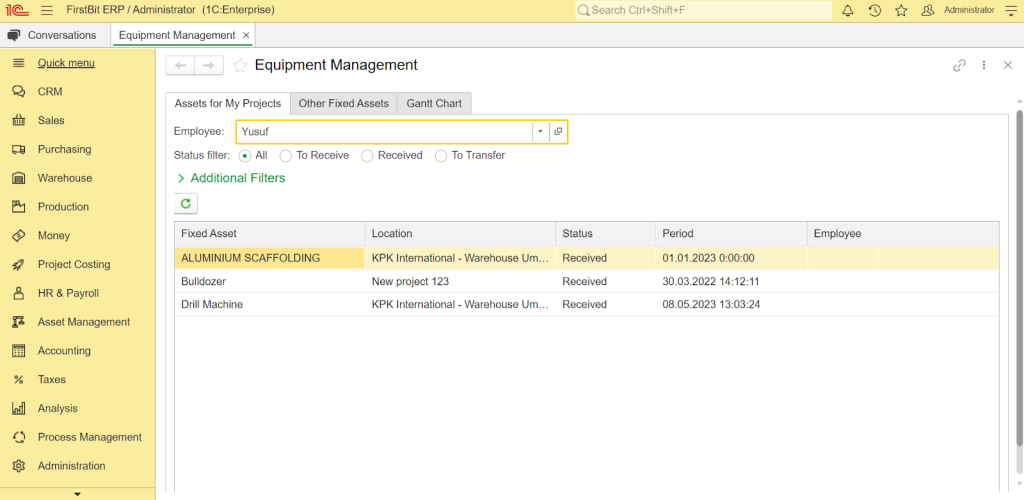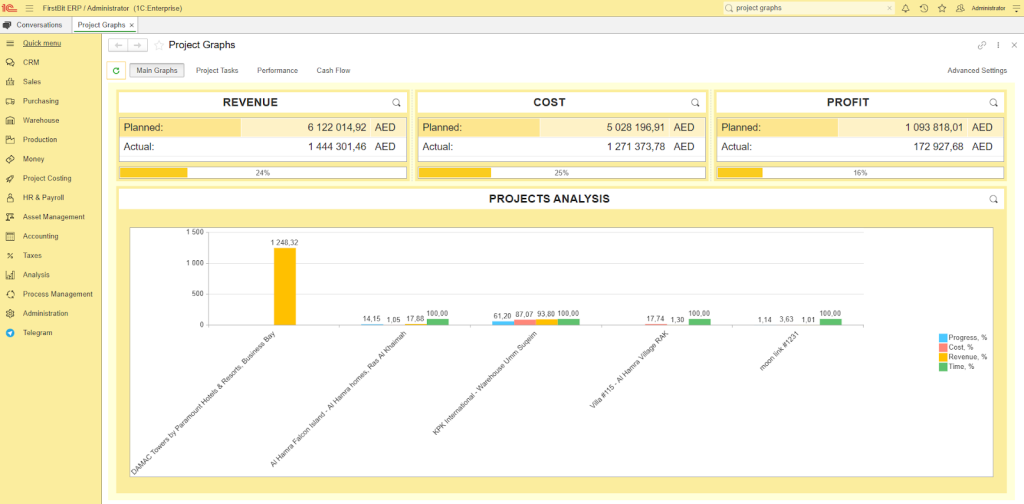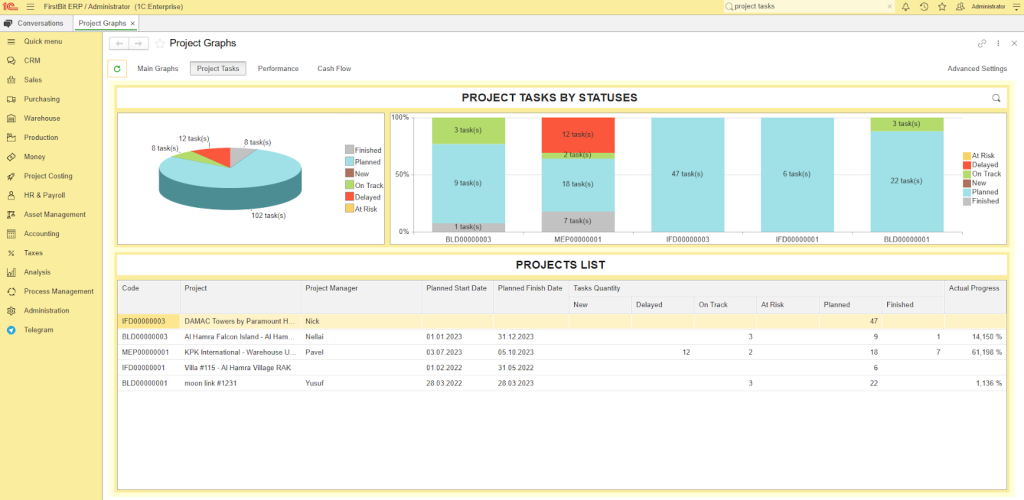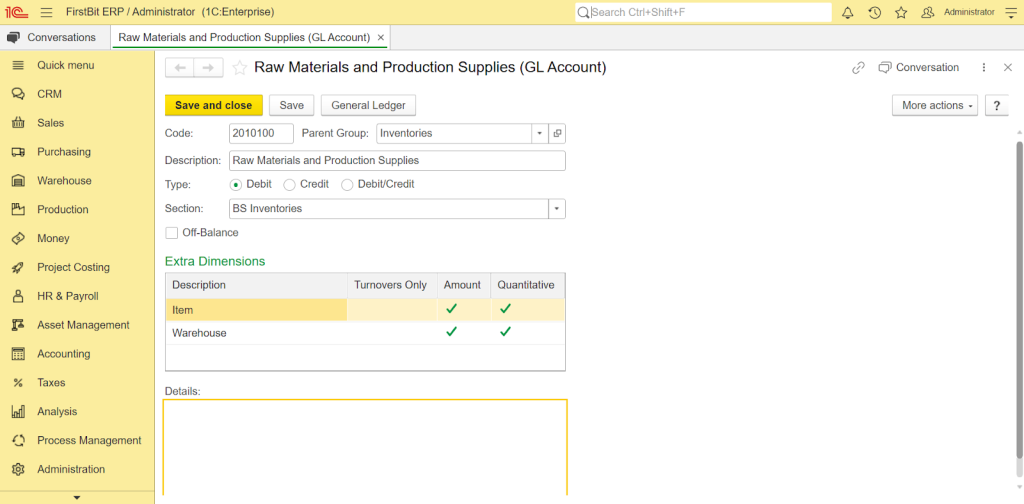Sustainability isn’t just a buzzword. It’s quickly becoming a deal breaker in construction. Whether you’re a developer, contractor, or project manager, green building certification is a must-have for all new construction. Unfortunately, going green can add to your project costs upfront. So, is going green really worth it? And if it is, how do you balance the extra expenses with the long-term benefits?
In this article, you’ll learn what green certification means for your budget, breaking down where the costs come from, how much you can actually save over time, and why skipping sustainability could cost you more in the long run. Plus, we’ll show you how smart digital tools like FirstBit ERP can make the whole process smoother and more cost-effective.
Key Takeaways
-
Green building certification often increases upfront project costs by 5-15% due to consultant fees, sustainable materials, and essential documentation.
-
Certified buildings realize significant operational savings, including 25-40% reductions in energy use and up to 60% in water consumption.
-
UAE offers financial incentives like fee reductions and fast-track approvals linked to Estidama certification, helping offset costs.
-
Challenges of green building include complex requirements, expertise gaps, regulatory variance, and risks of greenwashing.
-
FirstBit ERP software streamlines compliance, tracks resource use, and automates certification workflows for green projects.
What Is Green Building Certification?
Green building certification is a detailed process that checks whether a building (or new construction) meets certain environmental standards. The process looks at different parts of the project to ensure it uses resources efficiently and minimizes harm to the environment.
The process usually covers key areas like:
-
Energy efficiency. Making sure heating, cooling, lighting, and insulation are designed to reduce energy use.
-
Water conservation. Using fixtures that save water, such as low-flow taps and rainwater collection.
-
Sustainable materials. Choosing the right materials that are recycled, eco-friendly, or sourced ethically to cut down on environmental impact.
-
Indoor environmental quality. Improving air quality, ventilation, natural light, and comfort inside the building.
To get certified, a project team needs to submit documentation proving the building meets these standards. This often involves calculations, energy models, and inspections by third-party inspectors who confirm everything is up to par.
Green building certification is a process that shows a building follows internationally recognized sustainability guidelines, giving accountability to the project and developers.
ERP tailored to UAE legislation
Navigate UAE construction laws effortlessly
Request a demo
Green Certifications in the UAE
The UAE has made sustainability a national priority, implementing multiple certification systems tailored to its desert climate and rapid urban growth.
LEED Certification
The Leadership in Energy and Environmental Design (LEED) certification, developed by the U.S. Green Building Council, is widely adopted across the UAE, especially in commercial and government projects.
LEED evaluates buildings based on several categories:
Fact: LEED-certified buildings have shown up to 25% energy savings and 11% water savings globally, helping reduce operating costs and carbon footprints[?].
Estidama Certification
Developed specifically for Abu Dhabi, Estidama (which means “sustainability” in Arabic) is run by the Abu Dhabi Urban Planning Council. It's a key part of the "Abu Dhabi Vision 2030" initiative, encouraging sustainable building practices and operations. Its Pearl Rating System (PRS) rates projects from 1 to 5 Pearls, with higher ratings indicating higher sustainability practices
[?].
Key Elements
-
Energy-efficient systems and passive design to cut energy use
-
Low-flow fixtures, sensor taps, and smart meters to reduce water use
-
Indoor air quality controls and outdoor shading for comfort
-
Use of regional/recycled materials and waste recycling plans
Al Sa'fat Certification
Al Sa’fat is Dubai’s mandatory green building certification for any construction requiring a building permit. It aims to improve living quality, while enhancing energy efficiency in line with Dubai’s Strategic Plan for sustainable urban development
[?].
The certification applies to a range of different buildings, including villas, residential, commercial, public, and industrial facilities. Projects undergo third-party audits and ongoing post-occupancy inspections to ensure lasting sustainability.
Key Elements:
-
Sustainable ecology and urban planning to reduce environmental impact
-
High indoor environmental quality for occupant health and comfort
-
Energy efficiency through renewable sources and smart metering systems
-
Water conservation and reuse to minimize potable water demand
-
Responsible materials use and waste management during construction and operation
Al Sa’fat offers three certification levels: Silver, Gold, and Platinum. Each level requires increasingly stricter compliance with the
UAE’s National Green Certificates.
What Are the Upfront Costs of Green Construction Certification?
Green certification typically increases upfront construction costs by 5-15%, depending on the size, scope, and rating system. In the UAE, these costs include a mix of professional services, material upgrades, and compliance requirements – all of which are necessary to meet standards like Estidama, LEED, or Al Sa’fat.
Key cost drivers include:
-
Sustainability consultants. Certified experts guide design teams through sustainability grading systems and review all required documentation. Consultant fees can range from AED 50,000 to AED 150,000, depending on the project's complexity.
-
Energy modeling and commissioning. Most certifications require performance simulations to validate energy efficiency, which can cost AED 10,000-50,000.
-
Higher-spec materials. Certified products, such as low-VOC paints, FSC-certified wood, solar-reflective roofing, and recycled steel, run 5–20% more expensive than conventional options.
-
Efficient systems. Upgraded HVAC units, LED lighting, and water-saving fixtures like dual-flush toilets are essential to meeting sustainability benchmarks.
-
Certification and review fees: Certifications like LEED charge registration and audit fees. You should set aside 1–2% of the total project cost to account for these.
Meet all of the UAE legal requirements with FirstBit ERP
Request a demo
What Are the Cost Savings of Green Building Certification?
While upfront costs can feel like a hurdle, buildings that are green construction certified outperform conventional ones across energy use, water efficiency, and long-term operations. Below are key areas where real savings add up, backed by data.
-
LEED certification. Buildings that are LEED certified use approximately 25-30% less energy than conventional buildings, with the highest-tier certifications (Gold/Platinum) achieving up to 45% savings
[?].
-
Water savings. Using low-flow fixtures can cut water use (and owners' expense) by half
[?].
-
Rainwater collection. Reusing greywater and rainwater harvesting in multi-story buildings can reduce water use by 36-42%
[?].
Fact: The International Energy Agency estimates buildings account for nearly 30% of global energy use; green certification directly reduces this footprint[?].
What Green Building Financial Incentives Exist in the UAE?
Green building incentives in the UAE help make sustainable development more affordable by reducing permitting costs. These benefits are especially helpful in Abu Dhabi and Dubai, where certification under Estidama or Al Sa’fat is typically required for new construction.
Key Elements
-
Abu Dhabi offers lower municipality and utility connection fees for projects with Estidama Pearl ratings.
-
Certified projects may get faster permit approvals, helping avoid costly delays.
-
Buildings with green certification are often given priority when bidding for government contracts.
Stay compliant with UAE laws
Automate VAT, payroll, and documentation
Request a demo
What Are the Challenges of Getting Green Certification?
Obtaining green building certification can be a demanding process (and ultimately be a contributing factor to
why construction projects fail). Some of the most common challenges include:
-
Complex documentation. Green construction standards involve
understanding building permits and performance reports that can overwhelm teams without prior experience.
-
Regulatory inconsistencies. Varying requirements across emirates complicate project planning, especially for firms working in multiple jurisdictions.
-
Climate adaptation. UAE’s harsh desert climate requires specific strategies that may not be covered by generic green standards.
What Are the Benefits of Green Construction for Developers and Owners?
Green building certification offers important advantages beyond meeting local requirements. It helps reduce energy use and water consumption through efficient systems and smart design principles. This lowers utility bills and operating costs for both owners and tenants.
Certified buildings tend to have higher property values and attract tenants who want healthier, more efficient spaces. This can lead to faster leasing and better rental income.
Additionally, green-certified projects are built with higher-quality materials and systems, which often results in fewer maintenance issues and longer-lasting infrastructure. This reduces repair costs, limits downtime, and makes property management more efficient.
Investing in green construction helps developers and owners save money, attract quality tenants, and position their projects for long-term success.
Navigate UAE construction laws with an ERP built for the UAE market
Request a demo
How FirstBit ERP Empowers Green Building Projects from Start to Finish
Green construction projects require careful planning, strict documentation, and full control of budgets and timelines. FirstBit ERP helps you manage every part of sustainable building, from materials to cost control, with tools built for contractors.
Material management and procurement
FirstBit ERP lets you
manage the full process of sourcing, usage, and productivity of your equipment and materials. You can track material deliveries, monitor stock levels, and link usage directly to project budgets. This improves accuracy and helps ensure you’re using sustainable resources efficiently.
Equipment Management in FirstBit ERP
Complete control over project costs
Plan your budget, control cash flow, and manage labor and payroll, all within the
FirstBit ERP system. You can track actual costs against planned budgets, forecast spending, and automatically update your finances as the project progresses. This keeps your green initiatives financially sustainable from start to finish.
Project Graphs by FirstBit ERP
Project management tools
Plan, schedule, and control your
construction timeline using Gantt charts, task lists, and mobile dashboards. Assign tasks, monitor completion rates, and manage project dependencies in one place. This helps teams stay accountable and keeps green projects moving forward.
Project Tasks by FirstBit ERP
Production control
FirstBit ERP connects project data with
production workflows. You can set production orders, track work in progress (WIP), manage raw materials, and monitor production costs, helping you minimize waste. This ensures better resource planning and avoids excess use of materials that could threaten sustainability targets. It also reduces delays by aligning production with actual site demand.
Raw Materials by FirstBit ERP
Final Thoughts on Green Building Costs and Compliance
Green building certification may raise your initial construction costs, but the long-term financial and environmental returns are undeniable. From energy and water savings to higher property value and tenant appeal, the payoff for sustainable building is both immediate and lasting.
The challenge lies in managing complexity, from documentation and design requirements to evolving regulations. That’s where FirstBit ERP delivers real value. With powerful tools for cost control, procurement, production, and compliance tracking, FirstBit helps you keep green construction projects on time, on budget, and fully certified.
Whether you're targeting LEED, Estidama, or Al Sa’fat, FirstBit ERP simplifies the process, so your sustainability goals don't become a burden.
ERP tailored to UAE legislation
Navigate UAE construction laws effortlessly
Request a demo
FAQ
How does green building certification affect construction budgets?
Green building certification typically adds 5-20% to initial costs due to specialized consultants, sustainable materials, and documentation. However, operational savings and government incentives often offset these investments, improving overall project economics.
Do green construction standards apply to all types of building projects?
Yes. Standards cover residential, commercial, and industrial developments, addressing energy, water, materials, waste, and indoor environmental quality.
Is green certification worth the extra cost?
For most projects, yes. Certification boosts asset value, reduces operating costs, improves leasing potential, and supports ESG compliance, particularly in competitive markets like the UAE.
What role does software play in meeting green construction standards?
Software like FirstBit ERP automates reporting, tracks resource usage, and simplifies project management, helping teams meet green standards efficiently and accurately.
Camden Benoit
Contributing Author
Camden is a technical copywriter with 5+ years of experience who has worked at several SaaS companies and written content for the construction sector, crafting well-researched articles that simplify complex industry topics for both industry professionals and newcomers.
















